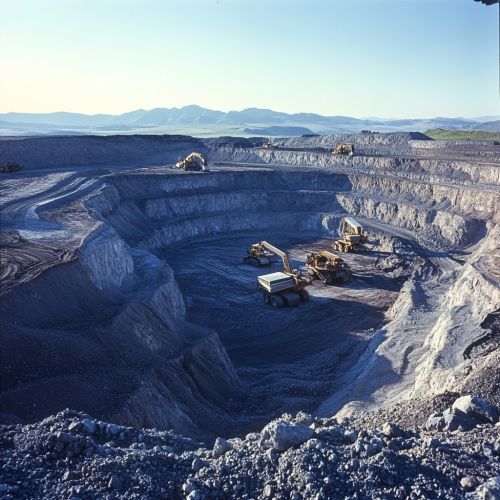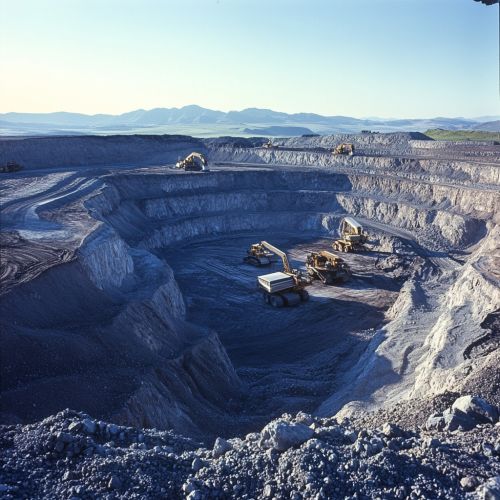Environmental impact of the oil shale industry
Introduction
The environmental impact of the oil shale industry encompasses a wide range of issues, including the extraction processes, waste management, water usage, air emissions, and the long-term ecological effects. This article delves into the multifaceted environmental consequences of oil shale operations, providing a detailed and comprehensive analysis.
Extraction Processes
Oil shale extraction can be divided into two main methods: surface mining and in-situ processing. Each method has distinct environmental implications.
Surface Mining
Surface mining involves the removal of large quantities of overburden to access the oil shale deposits. This process leads to significant land disturbance, habitat destruction, and soil erosion. The removal of vegetation and topsoil can result in the loss of biodiversity and the disruption of local ecosystems.


In-Situ Processing
In-situ processing involves heating the oil shale underground to convert kerogen into synthetic crude oil. This method reduces surface disruption but poses risks to groundwater contamination and subsurface ecosystems. The injection of heated fluids can mobilize heavy metals and other contaminants, potentially impacting aquifers.
Waste Management
The oil shale industry generates substantial amounts of waste, including spent shale, process water, and air emissions. Proper management of these wastes is crucial to mitigate environmental impacts.
Spent Shale
Spent shale is the residual material left after the extraction of oil. It contains various contaminants, including heavy metals and polycyclic aromatic hydrocarbons (PAHs). Disposal of spent shale in landfills can lead to leachate formation, which may contaminate soil and groundwater.
Process Water
The extraction and processing of oil shale require significant amounts of water, leading to the generation of contaminated process water. This water often contains dissolved salts, organic compounds, and heavy metals. Treatment and disposal of process water are critical to prevent pollution of water bodies.
Water Usage
Oil shale operations are water-intensive, with water being used for extraction, processing, and cooling. The high water demand can strain local water resources, especially in arid regions.
Water Consumption
The water consumption for oil shale extraction and processing can vary widely depending on the technology used. Surface mining and retorting processes typically require more water compared to in-situ methods. The competition for water resources can impact agriculture, drinking water supplies, and local ecosystems.
Groundwater Contamination
Both surface mining and in-situ processing pose risks to groundwater quality. The infiltration of process water and leachate from spent shale can introduce contaminants into aquifers. Monitoring and mitigation measures are essential to protect groundwater resources.
Air Emissions
The oil shale industry contributes to air pollution through the release of various pollutants during extraction and processing.
Greenhouse Gas Emissions
Oil shale operations emit significant amounts of carbon dioxide (CO2) and other greenhouse gases (GHGs). The combustion of fossil fuels for heating and processing oil shale is a major source of CO2 emissions. In-situ processing also releases methane, a potent GHG.
Particulate Matter and Volatile Organic Compounds
The extraction and processing of oil shale generate particulate matter (PM) and volatile organic compounds (VOCs). PM can cause respiratory issues and degrade air quality, while VOCs contribute to the formation of ground-level ozone and smog.
Long-Term Ecological Effects
The long-term ecological effects of oil shale operations can be profound, affecting soil, water, and biodiversity.
Soil Degradation
Surface mining leads to the removal of topsoil and vegetation, resulting in soil degradation. The loss of soil structure and nutrients can hinder the recovery of vegetation and disrupt local ecosystems.
Water Quality Impacts
The contamination of surface and groundwater from oil shale operations can have lasting effects on water quality. Pollutants such as heavy metals and PAHs can persist in the environment, posing risks to aquatic life and human health.
Biodiversity Loss
The destruction of habitats and the introduction of pollutants can lead to biodiversity loss. Species that rely on specific habitats may be displaced or face population declines due to the altered environment.
Mitigation Measures
Various mitigation measures can be implemented to reduce the environmental impact of the oil shale industry.
Land Reclamation
Land reclamation involves restoring disturbed land to its natural state or repurposing it for other uses. Techniques include re-vegetation, soil stabilization, and the creation of new habitats to support biodiversity.
Water Treatment
Advanced water treatment technologies can be employed to treat process water and prevent contamination of water bodies. Methods such as reverse osmosis, activated carbon filtration, and constructed wetlands can effectively remove contaminants.
Emission Control
Emission control technologies, such as scrubbers and filters, can reduce air pollutants from oil shale operations. Implementing best practices and regulatory standards can help minimize emissions and protect air quality.
